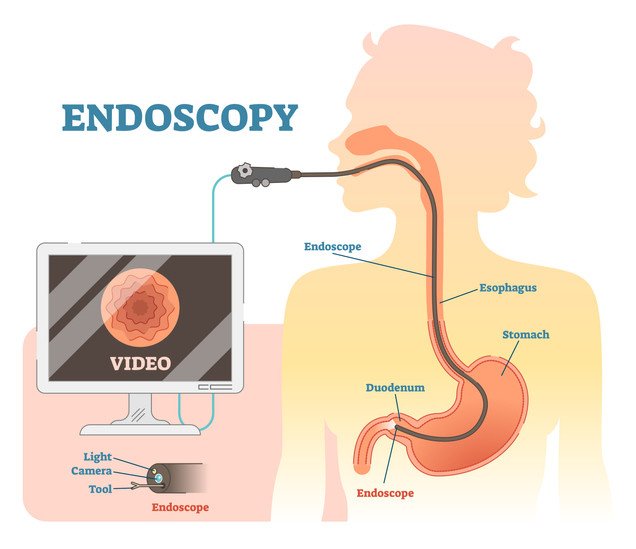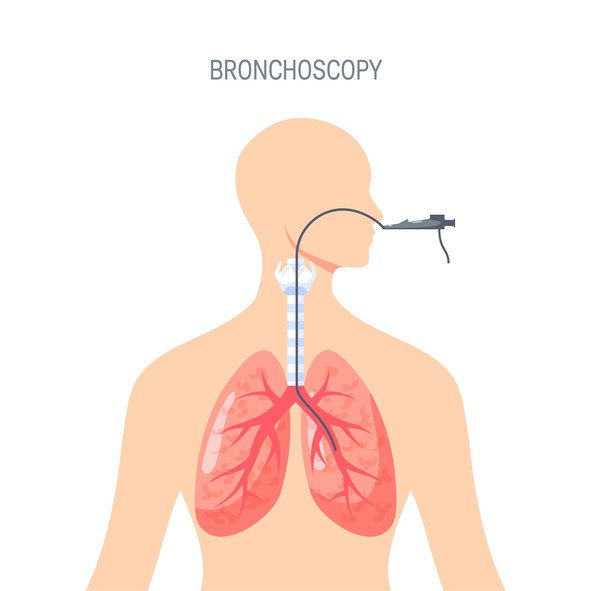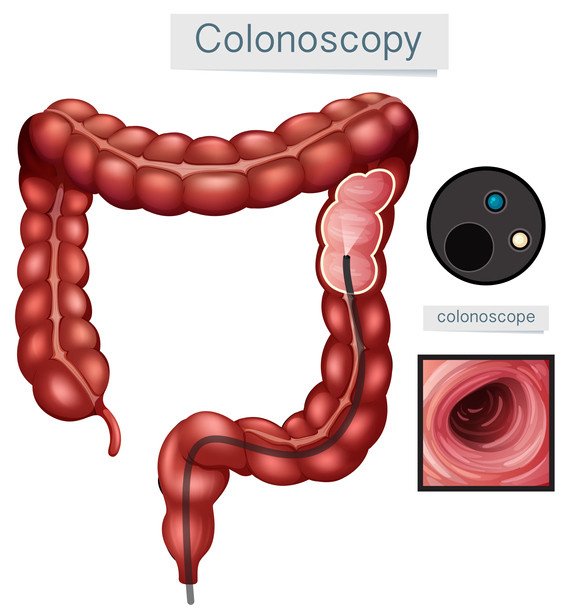Endoscopy
Medically reviewed by Drugs.com. Last updated on Nov 27, 2023.
What is a Endoscopy?

Endoscopy describes many procedures that look inside the body using some type of endoscope, a flexible tube with a small TV camera and a light on one end and an eyepiece on the other. The endoscope allows doctors to examine the inside of certain tube-like structures in the body. Many endoscopes transmit the doctor's view to a video screen. Most endoscopes have attachments that permit doctors to take fluid or tissue samples for laboratory testing.

Upper endoscopy allows a doctor to see inside the esophagus, stomach and top parts of the small intestine. Bronchoscopy examines the large airways inside the lungs (bronchi). Sigmoidoscopy and colonoscopy examine different parts of the lower digestive tract. Each type of endoscopy uses a slightly different endoscope with a different name — an upper endoscope for upper endoscopy, a bronchoscope for bronchoscopy, a sigmoidoscope for sigmoidoscopy and a colonoscope for colonoscopy. Other endoscopes allow doctors to see inside the abdomen and inside joints through small incisions.

The amount of pain or discomfort you feel depends on the area of the body being examined. Sigmoidoscopy (examination of the rectum and lower colon) rarely requires pain medication, whereas upper endoscopy, bronchoscopy and colonoscopy usually require sedation.
Endoscopy procedures vary in length: 10 to 15 minutes for sigmoidoscopy, 20 to 30 minutes for upper endoscopy, about 30 minutes for bronchoscopy and colonoscopy.
What It's Used For
Endoscopy is a common procedure used for many reasons, including:
- Cancer prevention — Sigmoidoscopy and colonoscopy allow doctors to find and remove polyps before they become colon cancers.
- Diagnostic evaluation of symptoms — Upper endoscopy and colonoscopy allow doctors to view organs directly and take pictures of any abnormalities that may be causing symptoms such as abdominal pain or rectal bleeding. The doctor can remove a sample of tissue (biopsy) through the endoscope during the procedure. The doctor may also obtain images of nearby organs, such as the pancreas, by an ultrasound attachment to an endoscope.
- Biopsy of an abnormal finding on a chest X-ray — During bronchoscopy, the doctor can take samples of secretions and bronchial and lung tissue to be examined in a laboratory.
- Removal of a foreign body — Endoscopy allows doctors to find and remove foreign bodies from the upper lung airways or gastrointestinal tract.
- Treatment — Doctors can use a variety of measures (clips, cautery, laser beams, etc.) to treat bleeding areas that they encounter during endoscopy. They can also remove small cancers, obviating the need for invasive surgery.

Preparation
The amount of preparation needed for endoscopy depends on what part of the body is being examined. For upper endoscopy, you will be instructed not to eat or drink for six to eight hours before the test. For bronchoscopy, you will need to follow restrictions on eating and drinking and take special precautions regarding your mouth and teeth. Your doctor will give you specific details. For colonoscopy, you will need to clear your bowels completely of stool before the procedure. To do this, you will modify your diet and take laxatives the day before the procedure. For sigmoidoscopy, you will need to have an enema before the test.
Before any endoscopy, remind your doctor of your medical and surgical history. Tell your doctor if you have any allergies. If you are a woman and there is any chance that you may be pregnant, tell your doctor.
You will need a sedative for upper endoscopy, bronchoscopy and colonoscopy. You will not be allowed to drive after the procedure because the sedative may make you less alert for the few hours immediately afterward. Arrange in advance for someone to drive you home.
How It's Done
In general, you will dress in a hospital gown and lie on an examination table. Your vital signs (pulse, blood pressure and respiratory rate) will be monitored throughout the procedure. The type of pain medication or sedatives you receive depends on what type of endoscopy you are having.
Follow-Up
If your endoscopy takes place in a doctor's office, you can get dressed and leave after the procedure. However, if you received a sedative medication, someone will need to help you get home. If your diet had been restricted before endoscopy, your doctor will tell you when you can start eating normally again.
Your doctor will inform you when to expect the results of biopsies or fluid samples taken during endoscopy.
Risks
There is minimal risk that the endoscope may injure or puncture some part of your body. For more specific risks related to a particular type of endoscopy, check with your doctor.
When To Call a Professional
Call your doctor immediately if you see abnormal bleeding coming from the part of your body examined by endoscopy. Call your doctor if you feel faint, dizzy or short of breath, if you have palpitations or if you develop pain, a fever, chills, severe headache or muscle aches. You doctor will tell you about other specific warning signs and symptoms to watch for, depending on the type of endoscopy you've had.
Additional Info
American Society for Gastrointestinal Endoscopy (ASGE)
https://www.asge.org/
National Institute of Diabetes & Digestive & Kidney Disorders
https://www.niddk.nih.gov/
American Lung Association
https://www.lung.org/
American Cancer Society (ACS)
https://www.cancer.org/
National Cancer Institute (NCI)
https://www.cancer.gov/
National Heart, Lung, and Blood Institute (NHLBI)
https://www.nhlbi.nih.gov/
Further information
Always consult your healthcare provider to ensure the information displayed on this page applies to your personal circumstances.
